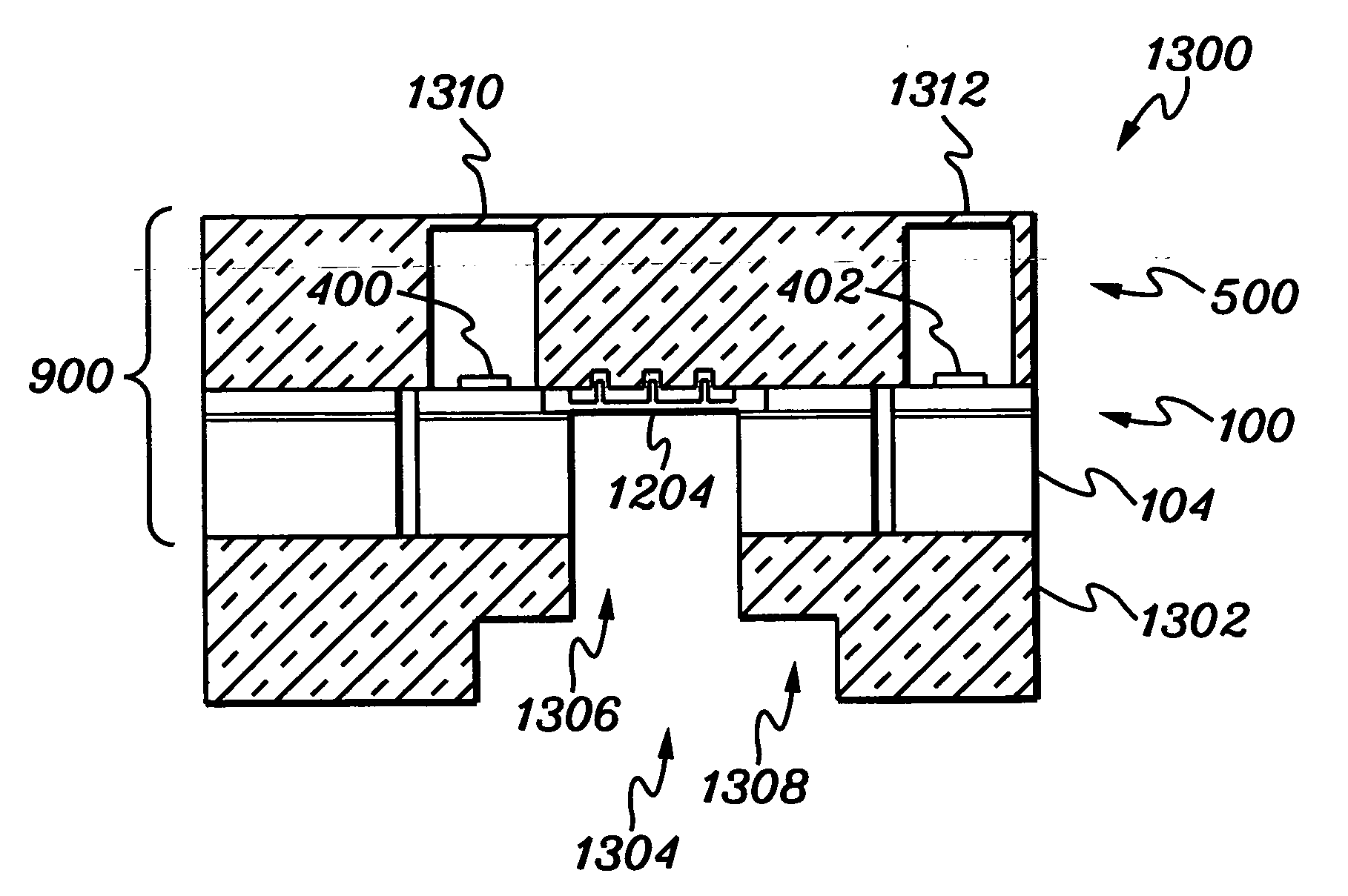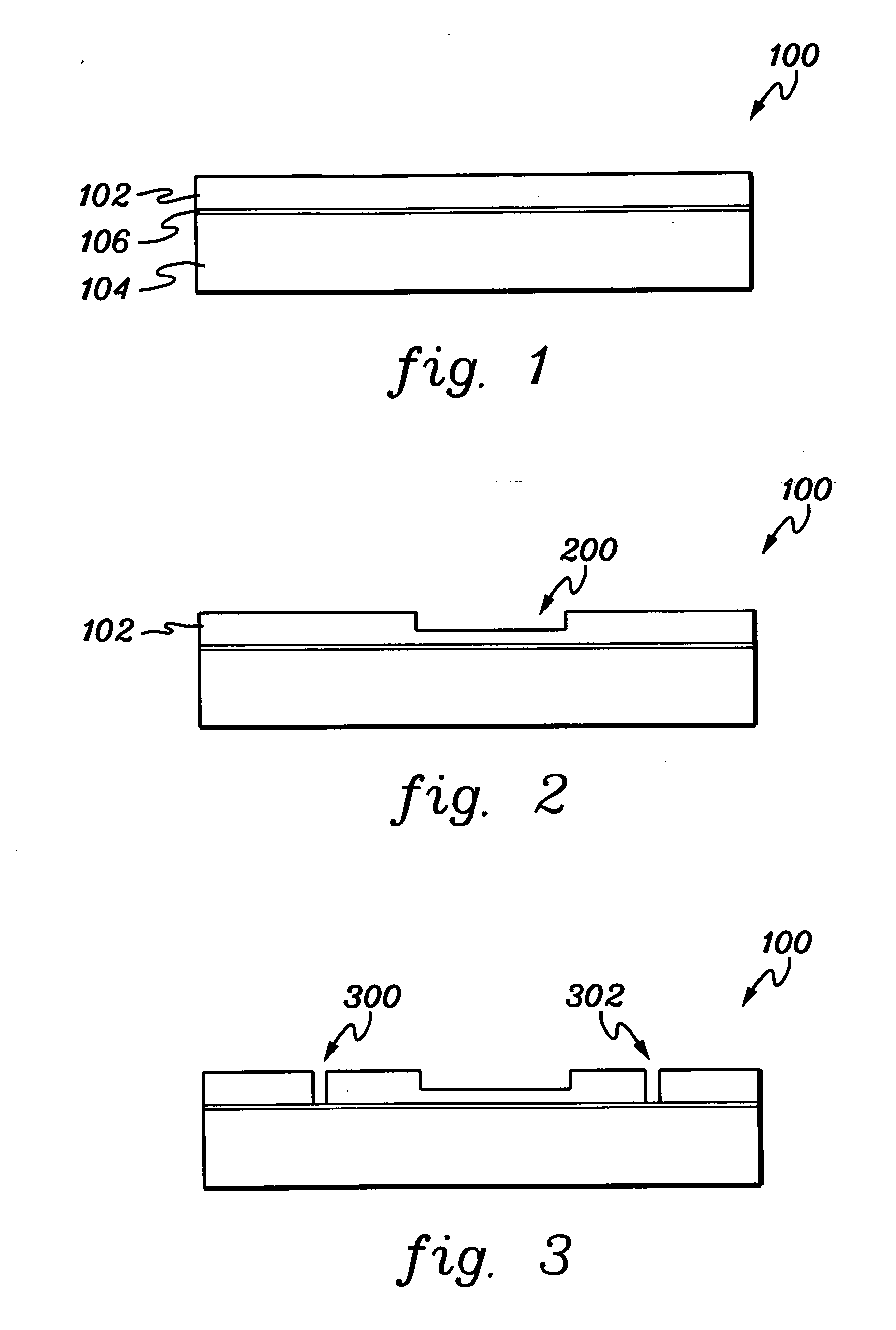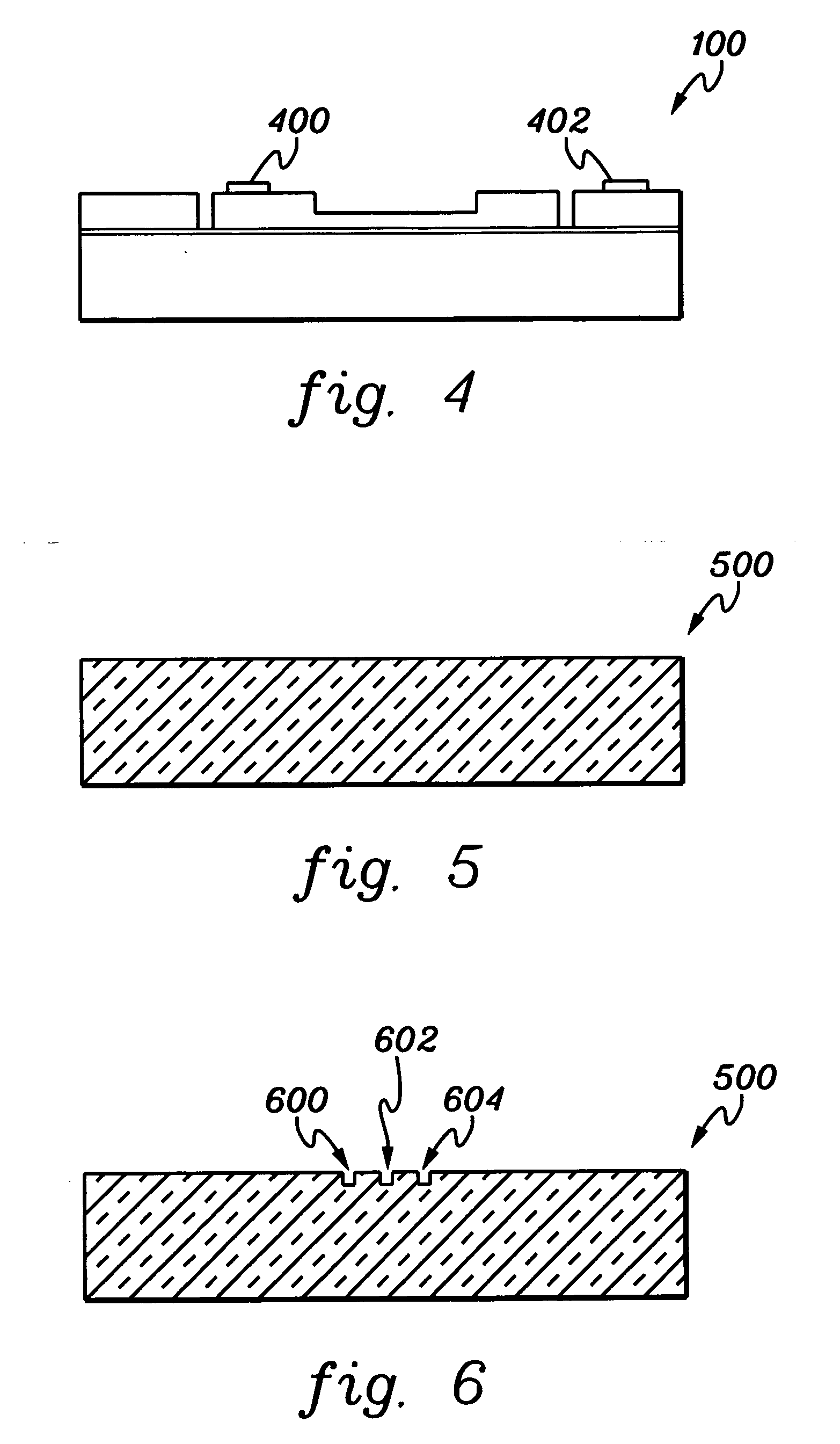MEMS structure with anodically bonded silicon-on-insulator substrate
a technology of anodized bonding and silicon on the substrate, which is applied in the direction of microelectromechanical systems, microstructural device assemblies, microstructural systems, etc., can solve the problems of inconvenient use of boron-doped silicon layers, inconvenient fabrication methods, and inconvenient use of thin film deposition and etching
- Summary
- Abstract
- Description
- Claims
- Application Information
AI Technical Summary
Benefits of technology
Problems solved by technology
Method used
Image
Examples
Embodiment Construction
[0034]FIG. 1 is a cross-sectional view of a silicon-on-insulator (SOI) substrate 100 prior to processing thereof in accordance with the present invention. SOI substrate 100 comprises a first silicon layer 102, also referred to as the device layer, a second silicon layer 104, also referred to as the handle layer, and an insulator layer 106 therebetween. The insulator layer comprises silicon dioxide (SiO2).
[0035]FIG. 2 depicts the SOI substrate 100 of FIG. 1 after photoresist patterning and etching to create a recess 200 in the device layer 102.
[0036]FIG. 3 depicts the SOI substrate 100 of FIG. 2 after the creation of trenches 300 and 302. The trenches are created, for example, by photoresist patterning and etching, using, for example, a Bosch process known in the art. As one skilled in the art will know, the Bosch process involves a sequence of alternating etch and deposition to fabricate high aspect ratio silicon structures while the substrate temperature is controlled near room t...
PUM
 Login to View More
Login to View More Abstract
Description
Claims
Application Information
 Login to View More
Login to View More - R&D
- Intellectual Property
- Life Sciences
- Materials
- Tech Scout
- Unparalleled Data Quality
- Higher Quality Content
- 60% Fewer Hallucinations
Browse by: Latest US Patents, China's latest patents, Technical Efficacy Thesaurus, Application Domain, Technology Topic, Popular Technical Reports.
© 2025 PatSnap. All rights reserved.Legal|Privacy policy|Modern Slavery Act Transparency Statement|Sitemap|About US| Contact US: help@patsnap.com



